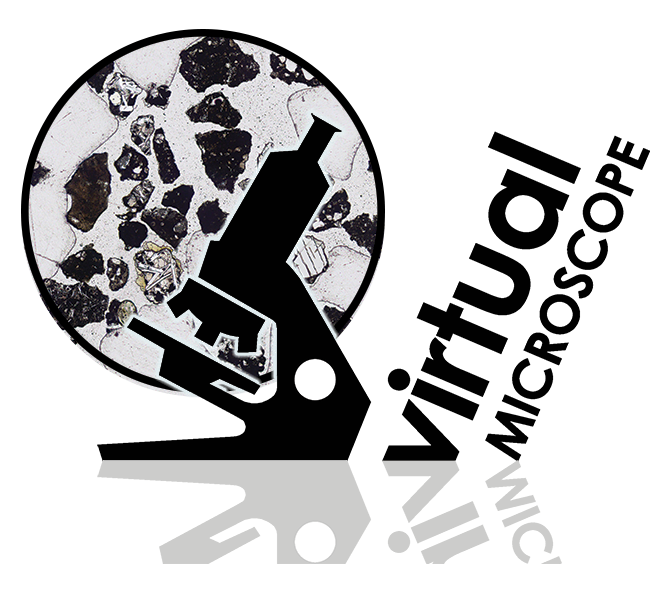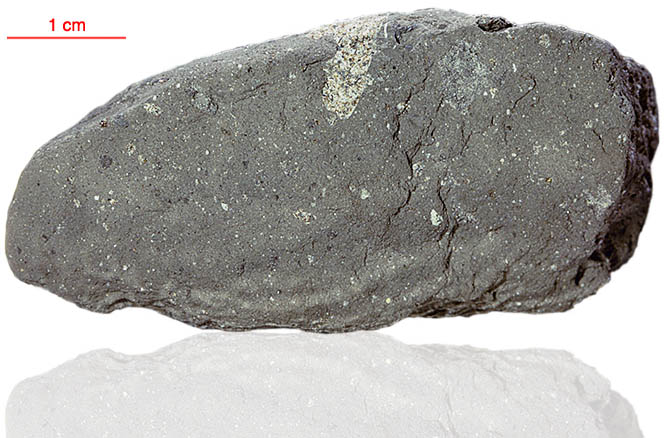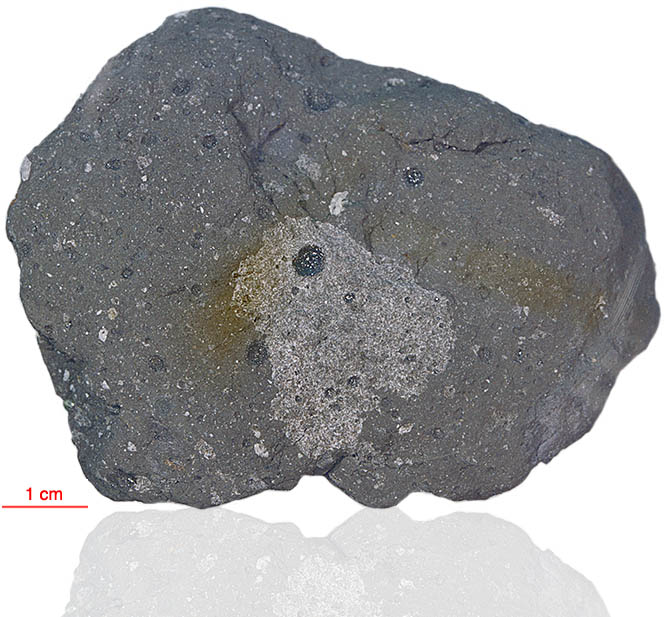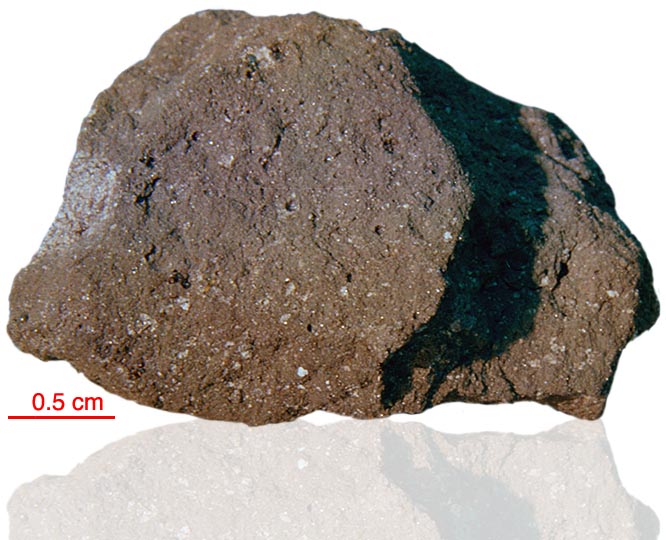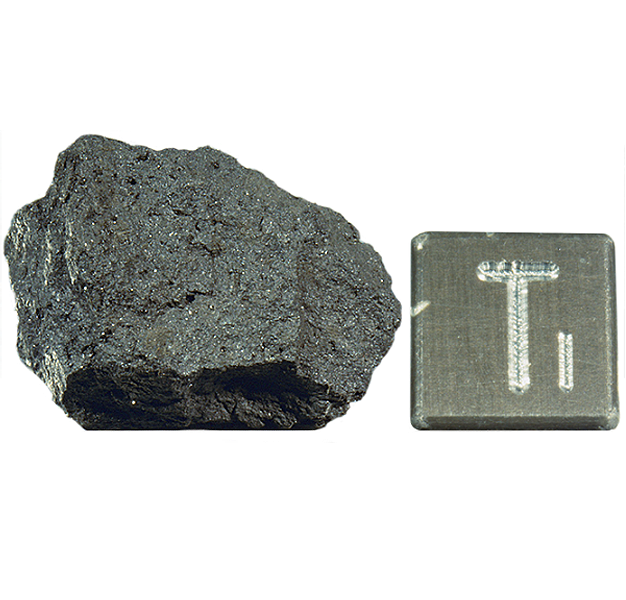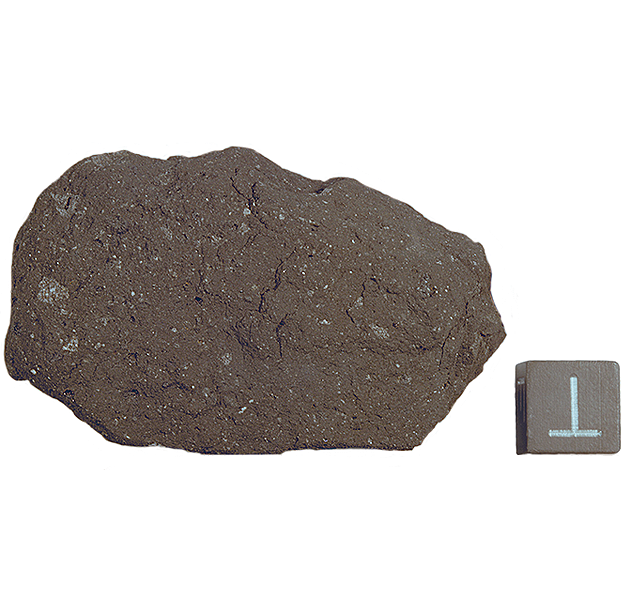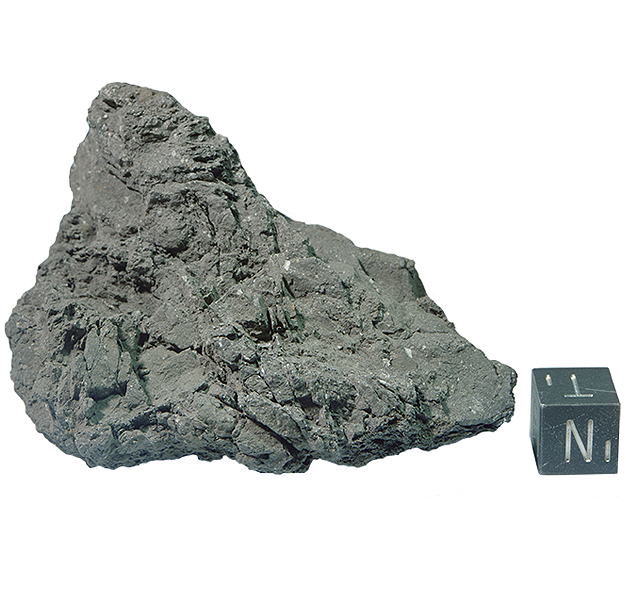
Fact sheet
10009 is a tough, medium grey, regolith breccia (weight 112 grams) containing about 20% of lunar highland material (anorthosite). Additionally the sample contains fragments of basalt, fragmental mineral grains and both colourless and orange glass. The glass is either fragmental or forms near perfect spheres. The minerals olivine, pyroxene, plagioclase feldspar and ilmenite have all been reported from this sample in minor amounts. By far the greatest constituent is the dark matrix (modal abundance estimated to be 58%). NASA reports that the sample may be part of a shatter cone.
Further details of this and other Apollo samples are here: http://curator.jsc.nasa.gov/lunar/
The Apollo 11 samples create an iconic collection since they were the first rocks collected by humankind that were returned to Earth from another solar system body. The Apollo 11 team collected and returned 22 kg of rock and soil samples.
Apollo 11 launched from Cape Kennedy on 16 July 1969. An estimated 530 million people watched Armstrong's televised image and heard his voice describe the event as he took "...one small step for a man, one giant leap for mankind" on 20 July 1969.

